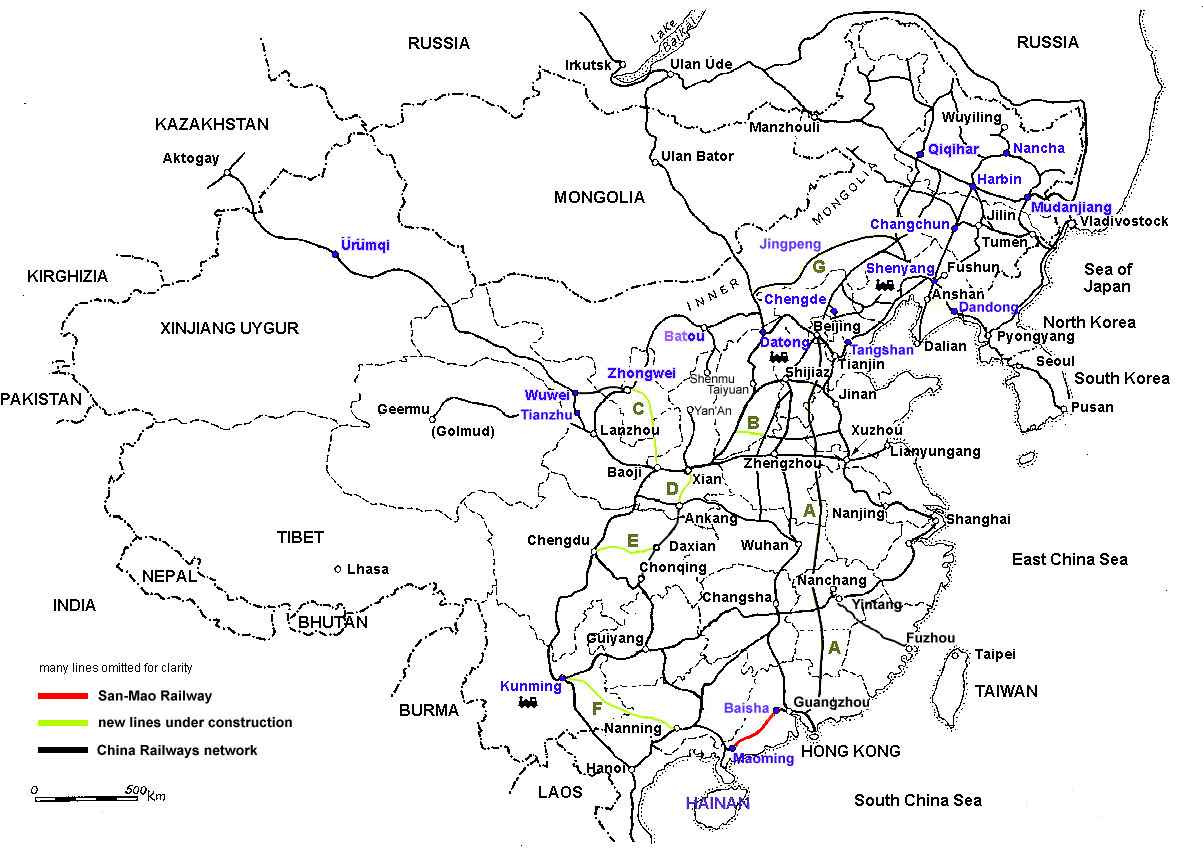(Sources: The Guardian, UK, New Civil Engineer)

China today announced it had begun construction of the world’s longest sea bridge – barely 18 months after opening the current record-holder.
The Y-shaped link between Hong Kong, Macau and China will be around 50km (31 miles) long in total, 35km of which will span the sea, said the state news agency Xinhua. Due to be completed by 2015, the 73bn yuan (£6.75bn) cost of the bridge will be shared by the authorities in the three territories.
Here are some interesting design features of this project as noted on the Hong Kong Government’s Highways Department website: The HZMB Main Bridge is a 29.6km dual 3-lane carriageway in the form of bridge-cum-tunnel structure comprising an immersed tunnel of about 6.7 km. According to the current option, It runs from the artificial island off Gongbei of Zhuhai to the eastern artificial island for the tunnel section just west of the HKSAR boundary.
The Highways department website notes that this project includes construction of a 29.6 km dual three-lane carriageway in the form of bridge-cum-tunnel structure comprising a tunnel of about 6.7 km and the construction of two artificial islands for the tunnel landings west of the HKSAR boundary
The structure also includes a 5.5km underwater tunnel with artificial islands to join it to bridges on each side. According to the engineering group Arup – which has helped with the design – it is the first major marine bridge-and-tunnel project in China. But the engineering firm described the structure as 38km in length; the reason for the disparity in the bridge length was unclear.
Work is expected to begin with land reclamation to create an artificial island of around 216 hectares (540 acres) off Zhuhai. This will become the customs point for those making the crossing.
But much of the structure will be prefabricated offsite, so, for example, the concrete deck sections can be produced at the same time as the foundations are laid. The tunnel will be made of precast sections – each 100 metres long.
“It is designed with a service life of 120 years. It can withstand the impact of a strong wind with a speed of 51 meters a second, or equal to a maximum Beaufort scale 16 (184 to 201kmph),” said Zhu Yongling, an official in charge of the project construction. “It can also resist the impact of a magnitude-8 earthquake and a 300,000-tonne vessel.”
According to an article in New Civil Engineer magazine earlier this year, the bridges cross three navigation channels while the tunnel goes under a fourth.
“There is an airport nearby, so we could not build a bridge [in that area] which was the reason for the tunnel. The immersed tube is the longest in the world at 5.5km long,” Naeem Hussain, global bridge leader at Arup, told the publication.
He said the bridge’s piers would each be 170 metres high and that the design team had minimised the structures impact on estuary flows by limiting the size and number of columns in the water.
The project has been on the drawing board for some time after first being discussed by politicians in the 1980s. The Hong Kong-Zhuhai-Macau Bridge (HZMB) Advance Work Coordination Group was established in 2003 and the China’s Central Government and the regional governments of Guangdong, Hong Kong and Macau agreed finance last summer. “The idea of having a bridge came more than 20 years ago around 1983 and came from a local tycoon named Sir Gordon Wu,” says Arup director Daman Lee.
Creating the two islands where the tunnel dives under the sea involves a considerable land reclamation work. “The border crossing facility in Hong Kong will have to be created from scratch as a reclaimed island,” said Lee. “It’s 120ha so it’s quite a big place. A car would come in from Zhuhai, go through customs and then onto Hong Kong. Or it would park there and public transport would be used. Macau is too small to allow for car traffic so all cars [from Hong Kong and China will have to] park [at the border crossing] and take public transport”.
The Hong Kong Government’s Highways Department website offers some interesting estimates about the traffic volume projections for this new sea link and offers this strategic outlook from an economic standpoint: The HZMB will be strategically important to the further economic development of Hong Kong, Macao and the Western Pearl River Delta region. It will significantly reduce transportation costs and time for travelers and goods on the road, but the benefits go far beyond this. With the HZMB, the Western PRD will fall within a reachable three-hour commuting radius of Hong Kong. This would enhance the attractiveness of the Western PRD to external investment, which is conducive to the upgrading of its industry structure. Hong Kong will benefit from this new economic hinterland, with its vast human and land resources which will provide ample opportunities for Hong Kong businessmen to expand their operation in the Mainland.
The Economic Net Present Value (ENPV) of the project is about RMB¥40 billion for an operation period of 20 years. The estimated ENPV for Hong Kong is about RMB¥23 billion as compared to RMB¥13 billion for the Mainland and RMB¥4 billion for Macao. The Economic Internal Rate of Return of the project is 8.8% in respect of Hong Kong over a 20-year period, or 12% over a 40-year period.
Click here to read the entire Guardian article. Also, do not hesitate to visit the Wiki page for this project, which offers far more information than any other source on the web, covering a whole slew of project information, assembled from various sources.


